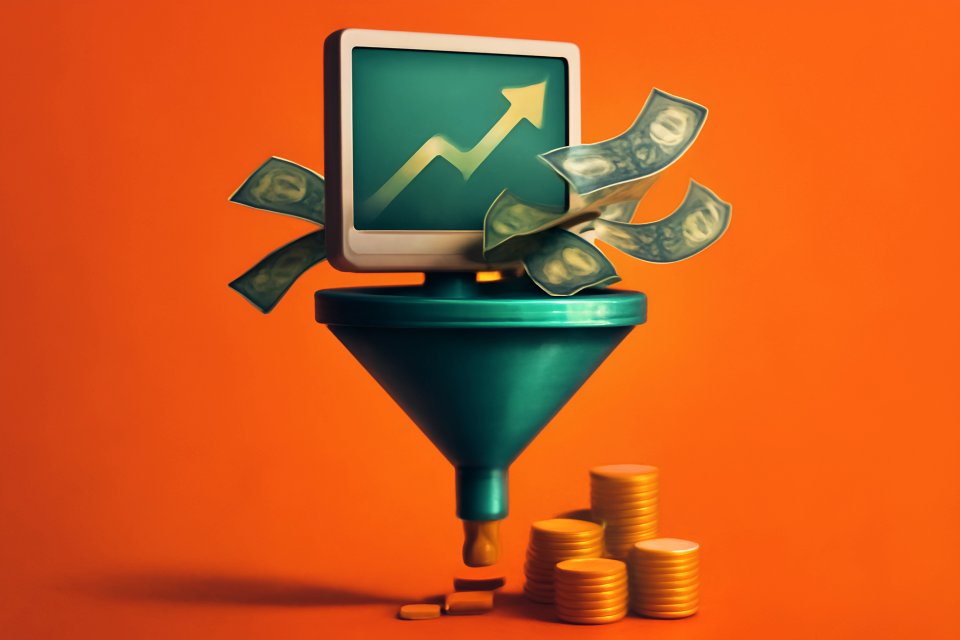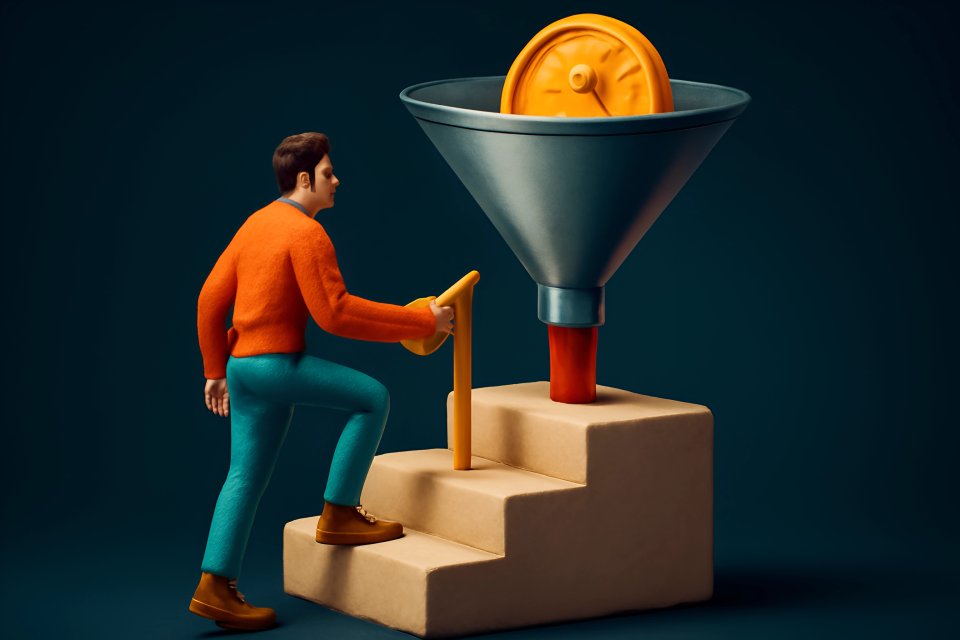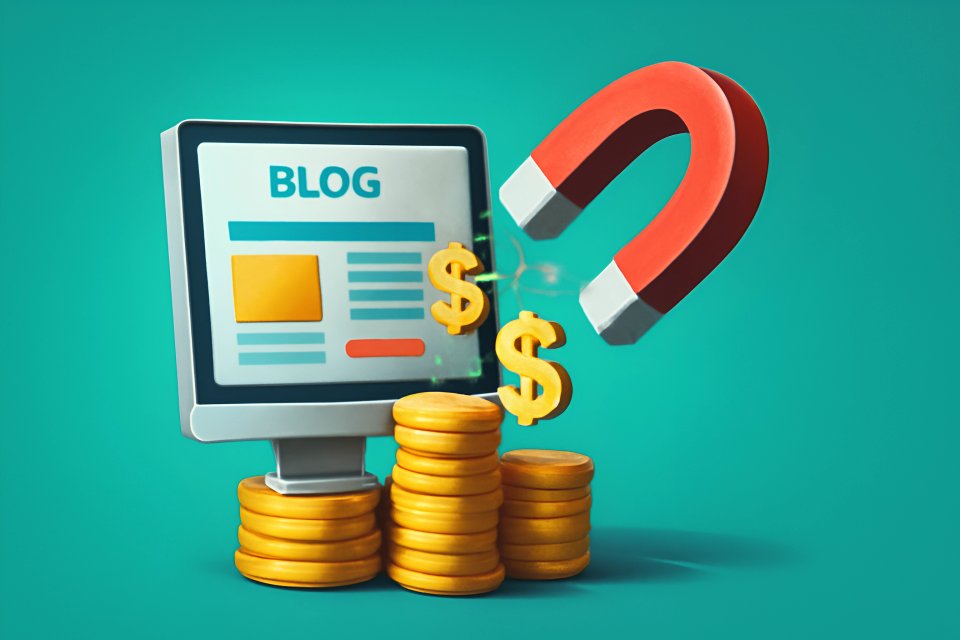
Are you pouring hours into creating blog posts, videos, or social media updates, only to be met with disappointing engagement and even lower sales? You're not alone. Many ambitious creators face the frustrating gap between creating good content and creating content that sells.
This is the content creator's dilemma. You follow the advice, you publish consistently, but the needle doesn't move. It's easy to fall for the myth that simply creating "more content" is the answer, leading to burnout and the crushing feeling that your hard work is being wasted.
But what if the problem isn't your work ethic? What if it's your strategy? The solution is a powerful shift in mindset—from a simple creator to a content strategist. In this post, you'll discover the exact high converting digital content strategies we use to turn readers into customers. We'll cover everything from understanding your audience's deepest buying triggers to crafting irresistible calls-to-action that get results.
Strategy #1: Go Beyond Demographics to Understand Purchase Intent
Stop guessing. The secret to content that sells isn't about reaching everyone; it's about reaching the right one with a message so specific it feels like you're reading their mind. High-converting content speaks directly to a single, urgent problem for a very specific person, tapping into their primal need for a solution.
To do this, you must create a detailed customer avatar that goes far beyond age and location. What keeps them up at night? What are their secret ambitions, their frustrating roadblocks, and their deep-seated hesitations about buying a solution like yours? According to research, 80% of consumers are more likely to purchase from a brand that provides these kinds of personalized experiences.
The best way to find this information is to mine for "Voice of Customer" data. Dive into the digital spaces where your audience lives—Reddit threads, Quora questions, Amazon reviews for similar products, and the comment sections of your competitors. Look for the exact phrases they use to describe their pain points and desires. This raw, unfiltered language is pure gold for your copy.
TheEarnist Pro-Tip: Before writing a single word, write down the one specific problem this piece of content solves for your ideal reader.
Strategy #2: Align Your Content with the Sales Funnel
Not every piece of content should scream "Buy Now!" In fact, that approach often repels potential customers. The most effective content marketing strategies guide your audience on a deliberate journey, building trust and desire long before you ask for the sale. This journey is your sales funnel.
The funnel consists of three main stages, and your content must be tailored to each one. By tailoring content to each stage of the buyer’s journey, you meet your audience where they are, providing the exact value they need at that moment. This strategic approach is what separates professional content marketers from hobbyist bloggers.
Think of it as a system designed to turn strangers into loyal customers. Companies that excel at this kind of lead nurturing have been shown to generate 50% more sales-ready leads at a significantly lower cost.
Top of Funnel (Awareness)
This is your first impression. The goal here is to attract new people who are aware they have a problem but don't yet know about your solution. Your content should be helpful, educational, and broadly appealing.
- Content Types: "How-to" blog posts, beginner's guides, checklists, social media tips.
- Example: "10 Side Hustles You Can Start This Weekend with No Money."
Middle of Funnel (Consideration)
At this stage, your audience is actively researching solutions. Your job is to build trust and position your offer as the best possible choice. This is where you showcase your expertise and prove your value.
- Content Types: In-depth product reviews, comparison posts, case studies, webinars.
- Example: "An Honest Review of Teachable: Is It the Best Platform for Your First Course?"
Bottom of Funnel (Conversion)
This is where you make the sale. The reader trusts you and is ready to make a decision. Your content should be direct, persuasive, and make it incredibly easy for them to buy.
- Content Types: Sales pages, testimonials, pricing guides, direct email offers.
- Example: A dedicated landing page for your ebook with a clear "Buy Now" button.
Strategy #3: Write to Convert with Proven Copywriting Formulas
Your words are your 24/7 sales team. They are the bridge between your reader's problem and your solution. To make that bridge strong enough to carry a credit card across, you need to move beyond just sharing information and start writing to persuade.
One of the most powerful and simple formulas is PAS: Problem-Agitate-Solve. First, state the problem your reader is experiencing in their own words. Next, agitate that problem by vividly describing the frustration and pain it causes. Finally, present your content or product as the clear, logical solution that will make it all go away.
Most importantly, always focus on benefits, not features. Nobody buys a drill because they want a drill; they buy it because they want a hole. Translate what your product is into what it does for the customer.
- Feature:
This course includes 10 video modules. - Benefit:
Learn the entire system in a single afternoon and launch your side hustle by next week.
Finally, build unshakable credibility with social proof. Data shows that a staggering 93% of consumers say online reviews influence their purchase decisions. We are wired to trust the crowd, so leverage testimonials, user-generated content, and data points to reduce purchase anxiety and prove that your solution works. This is a key part of building the authentic engagement and influencer marketing that drives modern conversions.
Strategy #4: Use SEO to Attract Ready-to-Buy Traffic
The most persuasive content in the world is useless if it's delivered in an empty room. Search Engine Optimization (SEO) is how you fill that room with people who are actively searching for the solution you provide. These SEO content tips ensure you attract the right audience at the right time.
The key is to target long-tail keywords. These are longer, more specific phrases that reveal a user's intent to buy. Someone searching for "project management" is just browsing, but someone searching for "best project management tool for freelancers" is ready to make a decision. By creating content that targets these specific queries, you attract highly qualified, motivated traffic.
Once you have your keyword, you need to optimize your content. This isn't about keyword stuffing; it's about signaling to search engines what your content is about while improving the user experience. To do this effectively, you should focus on long-tail keywords and regional variations to capture the most motivated segments of your market.
On-Page SEO Checklist
- Title and URL: Include your primary target keyword in your page title and URL.
- Introduction: Place your keyword naturally within the first 100 words of your article.
- Subheadings: Use descriptive H2 and H3 subheadings to structure your content and include related keywords.
- Meta Description: Write a compelling meta description (the short text under the title in search results) that acts as a mini-ad for your post.
- Internal Links: Guide readers to other relevant content on your site, especially pages that are designed to convert, like a sales page or an affiliate marketing funnel for niche products.
Strategy #5: Tell Your Audience Exactly What to Do Next
Never leave your reader hanging. After they've consumed your valuable content, they are at their peak moment of motivation. If you don't give them a clear, compelling next step, that energy will dissipate, and you'll lose the opportunity for digital sales conversion.
A powerful Call-to-Action (CTA) is not a suggestion; it's a command. It tells your audience precisely what to do next. Vague phrases like "Click Here" or "Learn More" are weak. Instead, use specific, action-oriented language that promises a clear benefit. "Download the Free Guide" or "Start Your 14-Day Trial" are far more effective.
You can amplify your CTA's power by creating urgency or scarcity. Phrases like "Join now before enrollment closes" or "Get your 50% discount today only" tap into the fear of missing out (FOMO) and compel immediate action. Make your CTAs stand out visually with buttons, contrasting colors, or styled boxes to draw the eye and encourage a click. Even in video content, using interactive features such as clickable CTAs can dramatically boost engagement and conversion rates.
TheEarnist Pro-Tip: Every single piece of content should have at least one clear CTA, even if it's just asking them to subscribe to your newsletter.
A Real-World Example: Anatomy of a High-Converting Affiliate Post
Let's put it all together. Imagine you're creating a blog post titled "Kajabi vs. Podia: Which is Better for Selling Your First Digital Product?"
Audience
Your target is a new creator who feels overwhelmed by technology and is afraid of making an expensive mistake. Their core desire is to launch their course or ebook quickly and easily, without the tech headache.
Funnel Stage
This is a classic Middle of Funnel (Consideration) piece. The reader is aware of their problem and is now actively comparing solutions.
Copywriting
You'd use the PAS formula in the intro: "Feeling paralyzed by the endless choice of course platforms? (Problem) It's frustrating when complex tech holds your brilliant idea hostage. (Agitate) We've compared the two simplest platforms to help you launch with confidence. (Solve)" Throughout the post, you'd compare benefits like "ease of use" and "saving money on transaction fees," not just a dry list of features.
SEO
You would target the long-tail keyword "Kajabi vs. Podia for beginners" and include it in your title, intro, and subheadings.
CTA
Your primary CTA would be a direct, benefit-driven affiliate link: "Ready to launch your course without the tech headache? Start your free 14-day trial of Podia here." This is a perfect example of how to apply these principles, which you can see in action in this detailed affiliate marketing case study.
Start Building Your Conversion Engine
Creating high-converting digital content isn't about magic or luck—it's a learnable skill. It's a strategic process built on a foundation of deep audience understanding, a clear customer journey, persuasive writing, smart SEO, and a compelling call-to-action.
By implementing these five proven strategies, you can stop guessing and start building. You can transform your content from a simple creative outlet into a powerful, predictable engine for your business. It's time to stop creating content that just exists and start creating content that sells.

















